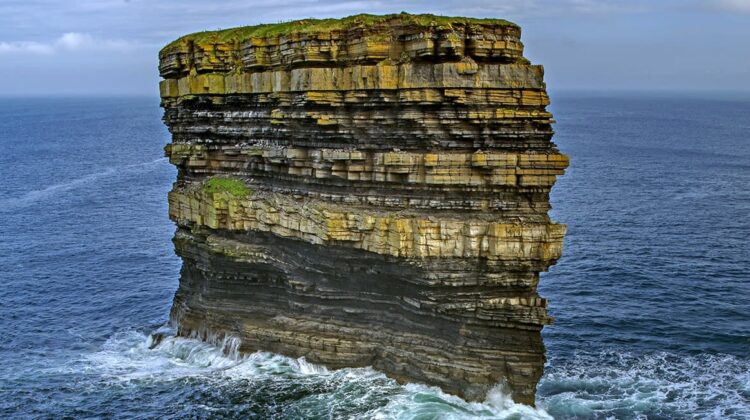
In the rugged landscapes of Ireland’s County Mayo, the striking figure of Dún Briste stands as a monumental testament to the forces of nature and time. This towering sea stack, rising dramatically from the Atlantic, recently captivated viewers worldwide, garnering over 57,000 upvotes on Reddit with a breathtaking image titled “What millions of years look like in one photo.” However, the story behind Dún Briste’s formation is even more fascinating than the viral title suggests.
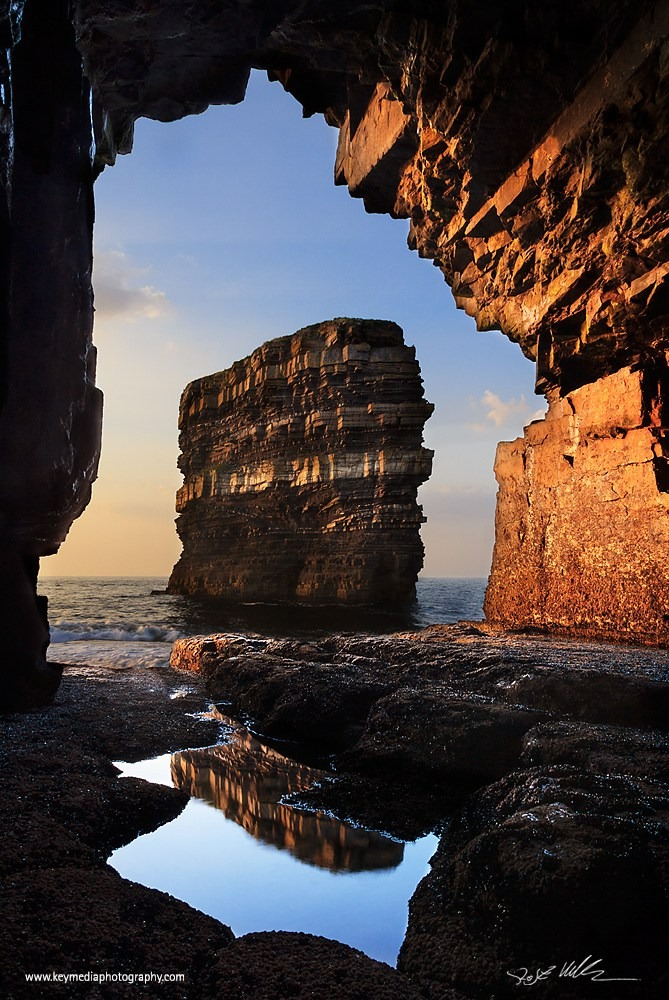
Geological Misconceptions Corrected
Maria McNamara, a paleobiologist at University College Cork, clarifies a common misconception about Dún Briste. Contrary to the viral post’s implications, Dún Briste likely formed over tens to hundreds of thousands of years—not millions. This revelation does not diminish its splendor but adds a layer of intrigue to its history, deeply rooted in the Carboniferous period, spanning from approximately 359 million to 299 million years ago.

A Canvas of Ancient Life
Though primarily composed of sedimentary rock, the possibility of Dún Briste housing fossils from the Carboniferous era remains a topic of interest among geologists and paleontologists. Should fossils be present, they could include remains of ancient corals, brachiopods, and crinoids—marine species that thrived during that distant epoch.
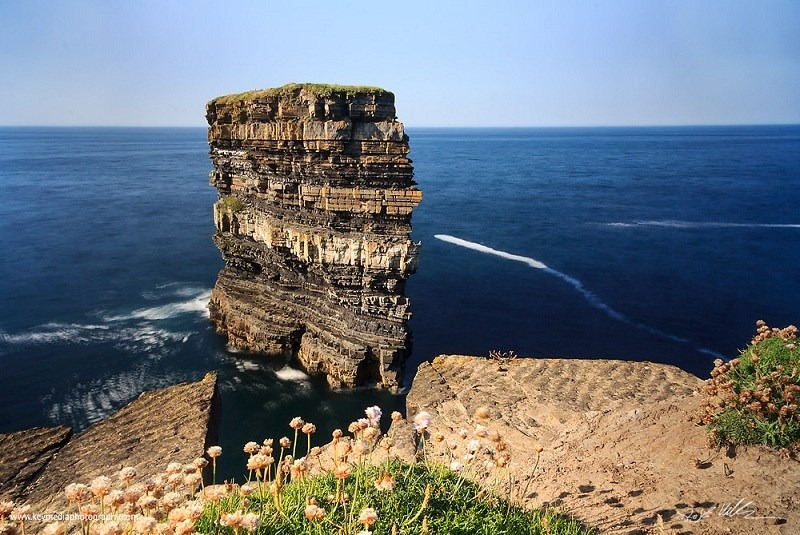
Cataclysmic Changes and Human Intrigue
The separation of Dún Briste from the mainland tells a dramatic tale of rising sea levels and catastrophic storms. Historical accounts suggest that an arch connecting the stack to the mainland was destroyed by a storm in 1393, giving rise to its name, which translates to “broken fort.” This event underscores the dynamic changes shaping our planet’s surface.

The sea stack’s allure extends beyond its geological significance. In 2016, Iain Miller’s daring climb marked the first human contact with Dún Briste’s summit in over a quarter of a century, echoing the adventurous spirit that the stack inspires. Prior to Miller’s ascent, a 1990 expedition revealed remnants of medieval habitation atop the stack, including a house and a quern stone, hinting at the historical human connection to this imposing natural structure.

Visualizing the Past Through Modern Eyes
Today, Dún Briste not only serves as a stunning subject for photographers and nature enthusiasts but also as a beacon for those drawn to the mysteries of the Earth’s geological past. Its layers of sedimentary rock, shaped by ancient seas, tell a story of environmental shifts and the resilience of nature in the face of relentless time.
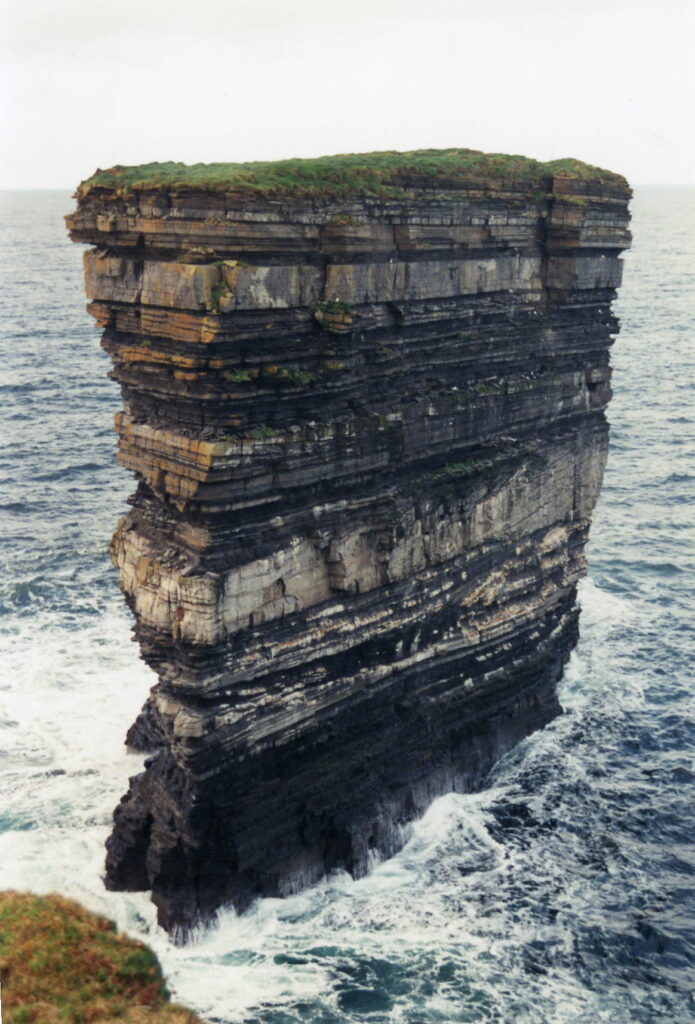
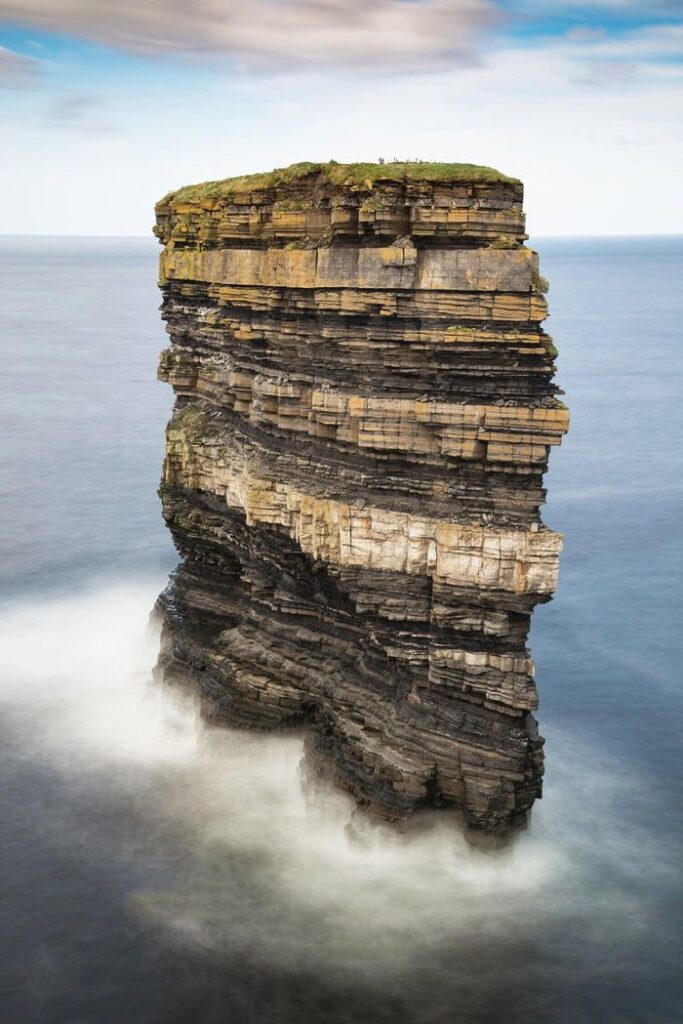
For those planning a visit or simply marveling from afar, Dún Briste offers more than just a visual spectacle—it invites onlookers to contemplate the profound and layered history of our planet, captured in the span of a single, majestic formation.

This is a clear indication that global temperature fluctuation has been going on more than fifty years !!!!!!!!!!!!!!!!! ?
There has always been fluctuation. The #ClimateCrisis is obvious in the extremes and the averages. If you believe in numbers, objectivity, reality, data, or fact, it can’t be denied.
You never gave its size? L x W x H??
beautiful
Amazing how nature leaves us with reminders.
Wish that we could get clear up close looks at the different layers.
Beautiful, I would so love to be put on top of this formation for a day away from everything just to relax and
hear only the ocean waves . Doesn’t hurt to dream!
Absolutely stunning. Living history but never alive. Completely fascinating. Thanks so much for your explanation.
Were all the visible layers laid down roughly 350 M years ago, or over a greater geological time range? Can you give approximate dates for the lowest layer in the stack and for the highest layer?
The original name (in Irish language) is “Dún Briste” meaning broken fort.
Feeling pretty stupid here but wouldn’t the top be the oldest and the bottom wherever that is be the most recent? Wonderful place to visit!